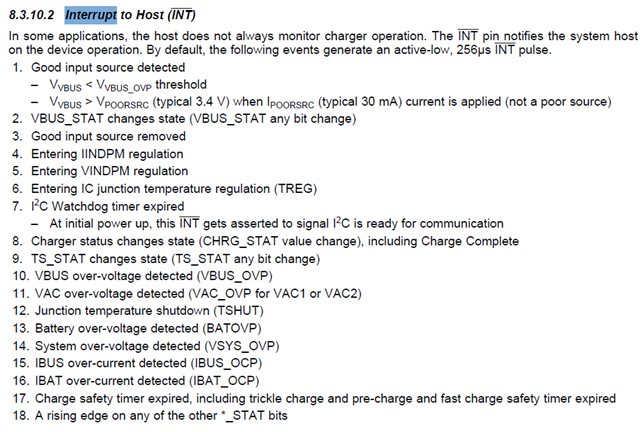Other Parts Discussed in Thread: BQ25792, , BQ25750
Hello,
I am interested in utilizing the I2C_IRQ for emergency situations.
My specific concern is whether there's a viable approach to communicate between BQ, TPS, and the MCU. I understand that the Technical Reference Manual (TRM) illustrates the use of I2C_IRQs pins for communication between TPS and the MCU, but I am seeking a solution for the communication path involving BQ -> TPS -> MCU.
In the given scenario, the BQ25792 triggers interrupts in TPS, which in turn notifies the MCU by setting the INT_EVENT1 register concerning a situation in the BQ registers. To provide a concrete example, I'm particularly interested in monitoring battery overvoltage detection as outlined in section 8.3.10 of the BQ25792 datasheet.

I am sending a transition to clarification.

Your guidance on achieving this communication flow effectively would be greatly appreciated.
Thank you.



